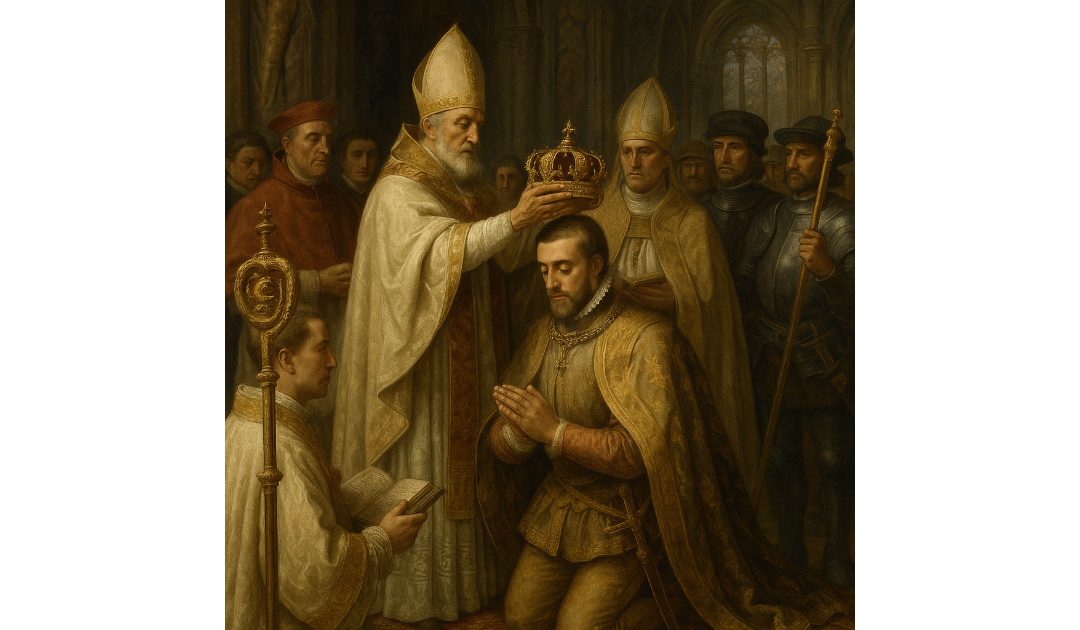On the 28th of June, 1519, Charles V was elected Holy Roman Emperor. Sir Anthony Standen was chased out of Flanders by Don Juan, Duke of Austria, when Standen was discovered to be having an affair with Barbara Von Blomberg, the duke’s mother and once mistress of Charles V. The reign of Charles V had a considerable influence of Standen’s time, so let us explore it further.
Charles V, Holy Roman Emperor (1500-1558), was a pivotal figure in European history whose reign marked the height of Habsburg power and witnessed significant religious, political, and military upheavals. Born in Ghent, present-day Belgium, to Philip the Handsome of the House of Habsburg and Joanna of Castile, Charles inherited a vast empire that spanned Europe and the Americas, making him one of history’s most influential monarchs.
Upon his grandfather Maximilian I’s death in 1519, Charles became Holy Roman Emperor, having already ascended as King of Spain in 1516. His dominion encompassed Spain, the Spanish Netherlands, parts of Italy, Austria, and the Americas. Managing such an expansive realm proved challenging, as it was culturally diverse and politically fragmented.
Charles’ reign was marked by relentless conflicts. Domestically, he grappled with the Protestant Reformation initiated by Martin Luther in 1517. Despite his staunch Catholicism, Charles struggled to suppress the movement, leading to decades of religious wars within the empire. The Peace of Augsburg in 1555, which allowed rulers to choose their territory’s religion, highlighted his inability to enforce religious uniformity.
Internationally, Charles contended with the Ottoman Empire’s expansion under Suleiman the Magnificent, who posed a constant threat to his eastern territories. Additionally, his rivalry with King Francis I of France led to a series of wars known as the Italian Wars, where both monarchs vied for dominance in Italy and beyond. Despite these challenges, Charles was a patron of the arts and supported the flourishing of Renaissance culture within his territories. His court attracted artists, scholars, and thinkers, contributing to the period’s rich cultural tapestry.
Physically robust in youth, Charles’ later years were plagued by health issues, notably severe gout. Fatigued by constant wars and the burdens of governance, he abdicated in 1556, dividing his empire between his son Philip II of Spain and his brother Ferdinand I, who succeeded him as Holy Roman Emperor. This division marked the beginning of the Spanish and Austrian Habsburg branches.
Charles retired to a monastery in Yuste, Spain, where he lived a life of relative seclusion until his death in 1558. His legacy is complex: he is remembered for his efforts to maintain Catholic orthodoxy, his struggles against Protestantism and the Ottomans, and his role in shaping early modern Europe’s political landscape.

